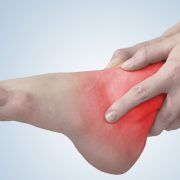
While carpal tunnel syndrome can interfere with daily tasks, it is treatable. Some people may try to find relief for their symptoms with carpal tunnel exercises, but this isn’t a proven method for lasting relief and should be done only after a long list of alternate treatments that better address carpal tunnel symptoms.
At EmergeOrtho—Triangle Region, our fellowship-trained Hand and Wrist Doctors specialize in diagnosing, treating, and preventing carpal tunnel syndrome. Whether you are prescribed conservative or surgical treatment for carpal tunnel relief, our patient-centered focus can find a solution that works for you.
What Works For Carpal Tunnel Besides Carpal Tunnel Exercises?
One of the most common nerve disorders, carpal tunnel syndrome affects anywhere from four to ten million Americans every year. The condition, often affecting people who have wrist injuries, medical conditions like arthritis or diabetes, or who perform repetitive tasks with their hands, can be painful and debilitating.
But do carpal tunnel exercises alone work to relieve symptoms? The answer is: probably not. Carpal tunnel exercises aren’t likely to address pain and numbness and are usually recommended only in combination with other treatments, such as behavior changes or wrist splints. This is generally the approach for mild to moderate carpal tunnel syndrome. If your symptoms are severe, you’ll probably still need surgery to get relief and carpal tunnel exercises will be ineffective.

By understanding what carpal tunnel syndrome is, we can better figure out ways to address it. CTS may include pain, numbness, and tingling of the wrist, hands, and arms. This is often caused by compression of the median nerve in the arm. The median nerve travels through a small tunnel in the wrist formed from bone and ligaments. When the tendons that bend the fingers swell for any reason, pressure on the nerve increases.
Because the condition typically worsens over time, and because permanent nerve injury is possible, it is vital to get a diagnosis and begin carpal tunnel treatment as soon as you notice symptoms.
Physicians and surgeons use several methods for carpal tunnel treatment. Conservative measures may include nighttime bracing, vitamin B6 treatment, or corticosteroids that can be delivered either orally or via an injection.
If symptoms and discomfort do not respond favorably to conservative treatments, or a diagnosis is severe, surgical intervention may be necessary. Untreated, carpal tunnel syndrome can affect your thumb muscles and cause ongoing numbness.
Many patients experience immediate relief following surgery, with continued improved outcomes over the months of full recovery.
Four Carpal Tunnel Exercises For Relief and Strengthening
It’s important to reiterate that carpal tunnel exercises rarely work without more comprehensive treatments. If used at all, they should be outlined under the guidance of a hand and wrist specialist. Here are four popular exercises you may encounter:
1. Wrist Extensor Stretch
A wrist extensor is a simple carpal tunnel stretch. Extend the arm palm-up and bend your wrist back toward your forearm, making a “stop motion.” Using your free hand, gently stretch the bent hand and wrist. Do not hyperextend the wrist. Only apply pressure to the bent wrist until you feel a stretch (not severe pain.)
Hold and release the pose for 15-second intervals. Perform this stretch daily for carpal tunnel prevention and as a warm-up and cool-down stretch.
2. Wrist Flexor Stretch
Wrist flexor stretches are the opposite of wrist extensors. Rather than straightening the arm with the palm facing up, bend the palm facing down. Using your free hand, gently stretch the bent wrist toward you. Hold and release the stretch for 15-second intervals.
Practice daily, especially before participating in an activity that involves gripping.
3. Foam-Ball Squeeze
Squeeze a foam ball (with or without exercise cords attached) while keeping your neck and shoulders relaxed. Position your elbow at 90-degrees, squeeze the foam ball for one second in your palm, then release. Stretch for 30 seconds to one minute twice daily for three months, or according to your orthopedic physician’s instructions.
4. Median Nerve Glides
Apply heat to your hand before practicing six-step median nerve glide exercises. After 15 minutes of heat, follow these steps:
- Make a fist.
- Extend your palm, with your fingers and thumb pointing up.
- With straight fingers, bend your hand back toward your forearm.
- With the fingers and wrist bent, extend your thumb.
- Keeping your fingers, thumb, and wrist extended, turn your forearm palm facing up.
- With the fingers, thumb, and wrist extended, gently stretch the thumb with your free hand.
Hold each pose for three to seven seconds. Apply crushed ice or frozen peas to the hand for 20 minutes after completing the exercises.
For more long-lasting relief options that do not include carpal tunnel exercises, or to get help for carpal tunnel syndrome, self-schedule an appointment today. Or, call us any time at 919-220-5255 with questions.







